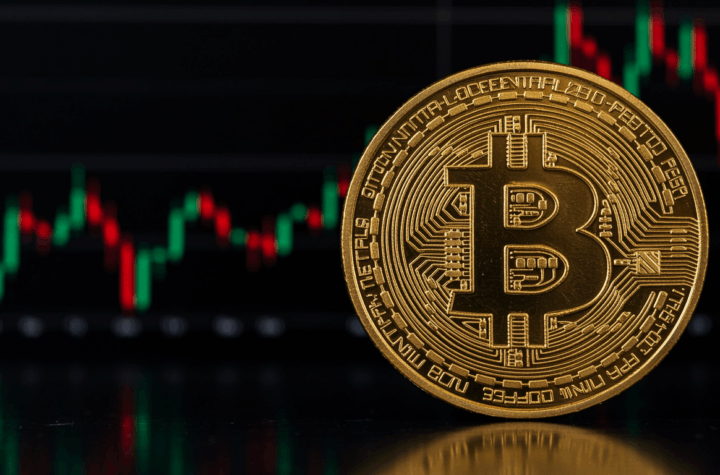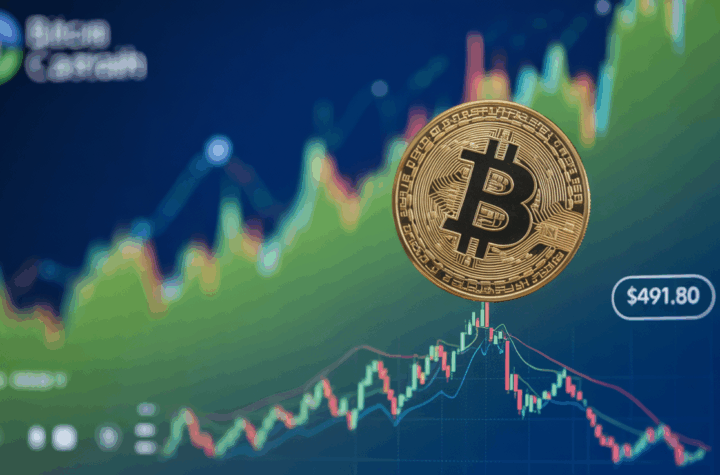
Bitcoin’s Long-Term Bullish Sentiment Fades as Inflation Risks Resurface
The long-term optimism surrounding Bitcoin is beginning to fade, with options market indicators signaling a shift from bullish conviction to neutral positioning. Rising inflation concerns and macroeconomic uncertainty are dampening trader confidence, just as historical comparisons resurface.
Data from Amberdata shows that the 180-day skew on Deribit—measuring the difference in implied volatility between out-of-the-money calls and puts—has fallen to zero. This marks a clear departure from the bullish sentiment that previously dominated longer-dated BTC options.
Market Shift Echoes 2022 Bear Market Onset
Griffin Ardern, head of options trading and research at BloFin, said the sentiment reversal mirrors warning signs that appeared ahead of Bitcoin’s last major downturn.
“Bitcoin’s long-term bullish tone in far-dated options has evaporated,” Ardern told CoinDesk. “The options market is now signaling that sustained upside momentum is unlikely, and the probability of new highs in the coming months is fading. The last time we saw similar conditions was in early 2022.”
This neutral outlook indicates a lack of conviction among traders regarding Bitcoin’s long-term direction. A skew of zero implies balanced demand for calls and puts, while a positive skew typically reflects bullish sentiment.
Covered Call Strategies Add Pressure
One possible driver behind the flattening skew is the increased use of structured products, particularly covered call strategies. In these setups, investors sell call options against existing BTC holdings to generate yield. This dynamic suppresses call option volatility relative to puts, contributing to the neutral shift in the 180-day skew.
Macro Headwinds Fuel Caution
The neutral positioning coincides with growing macroeconomic stress. Bitcoin dropped over 4% last week, nearing previous support at $11,965, after June’s core PCE—the Federal Reserve’s preferred inflation gauge—came in hotter than expected. Meanwhile, disappointing nonfarm payroll figures further rattled sentiment.
Shorter-term option skews also turned negative, indicating that traders are increasingly hedging downside risk.
Ardern pointed to emerging inflationary trends driven by global supply chain disruptions. “While falling auto prices provided some relief in the CPI report, it’s clear that inflationary pressure from the Pacific supply chain is spreading,” he noted. “Retailers are beginning to pass on costs from tariffs and logistics to consumers. Even if partially absorbed by wholesalers, the price increases are likely to show up—though possibly with a delay.”
Tariff Impact May Complicate Fed Policy
JPMorgan analysts echoed the inflation warning, projecting global core inflation to rise to 3.4% annualized in the second half of 2025—largely due to former President Donald Trump’s reintroduced tariffs. These inflationary pressures are expected to be most acute in the U.S. and may hinder the Fed’s ability to begin rate cuts.
Trump has repeatedly criticized the Fed for maintaining rates at 4.25%, arguing it’s restricting economic growth.
Data Watch: Services, CPI, and PPI
Investors are now looking ahead to key economic reports for clues on inflation’s next move. Tuesday’s ISM non-manufacturing PMI will offer insight into the services sector—accounting for a major portion of U.S. inflation. This will be followed by July’s Consumer Price Index (CPI) and Producer Price Index (PPI) later in the week, which could further shape interest rate expectations and market sentiment.
Outlook
With long-term bullish bets unwinding in the options market and macro risks building, Bitcoin’s path forward appears increasingly uncertain. Unless inflation pressures ease and rate cut prospects re-emerge, long-dated bullish sentiment may struggle to return.






More Stories
“Dogecoin steadies near $0.16 support amid profit‑taking that caps upside momentum.”
RLUSD Pilot Boosts XRP 5%, Technical Momentum Points to $2.50
How Aggressively Are BTC Traders Hedging After Recent Dip Under $100K?